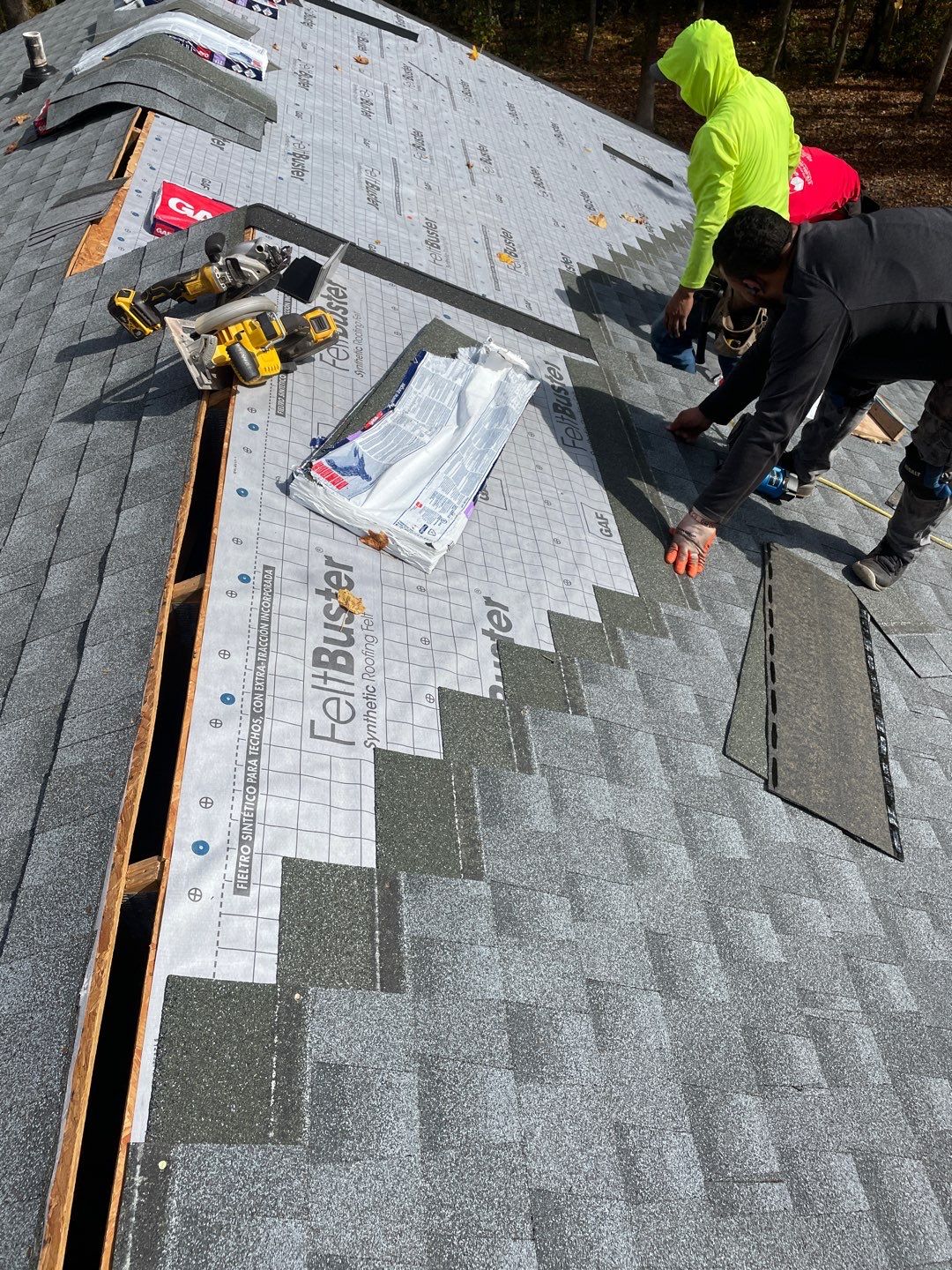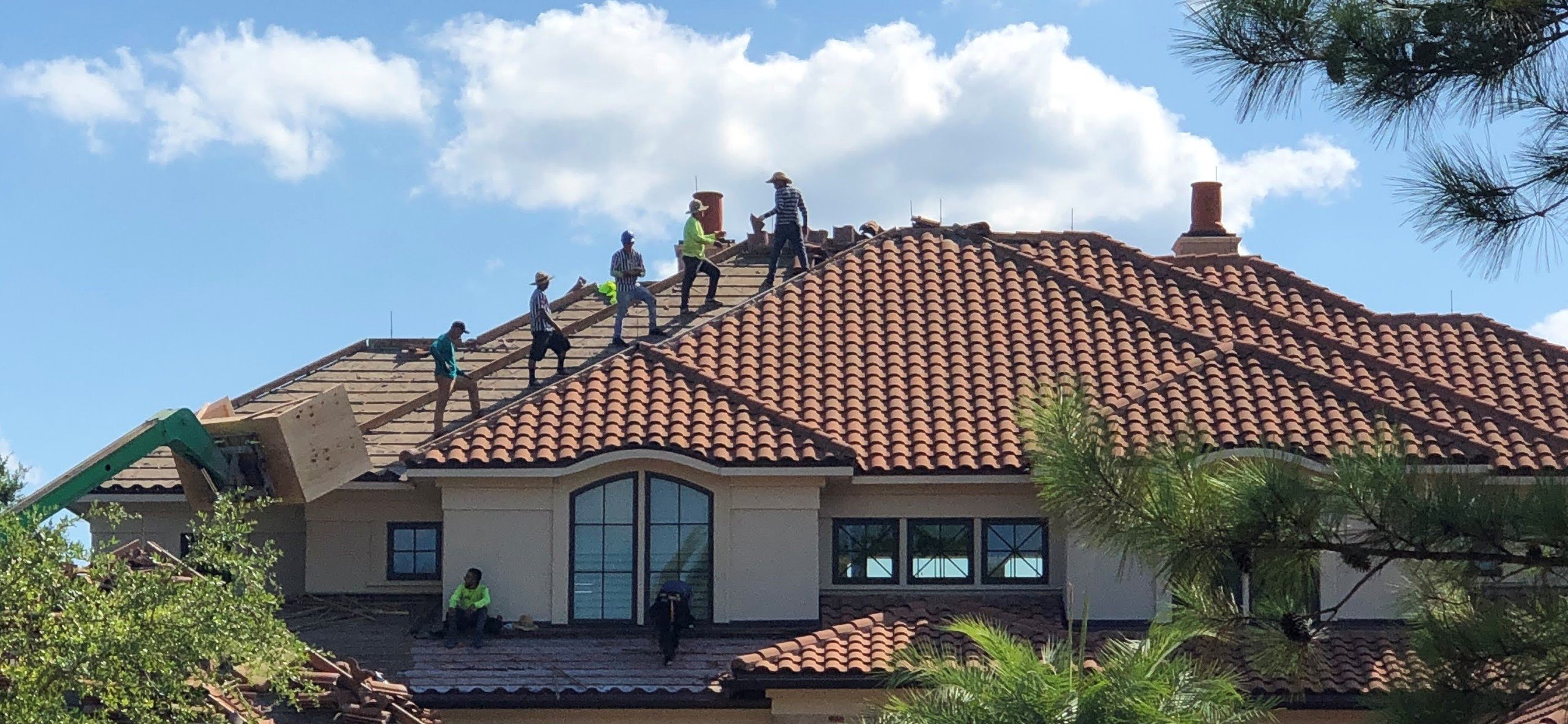Exactly How Gainesville Roofing Companies Can Change Your Home's Exterior
Exactly How Gainesville Roofing Companies Can Change Your Home's Exterior
Blog Article
Finest Practices for Ensuring Correct Roof Air Flow
Making certain proper roof ventilation is vital for the durability and efficiency of a roof system. A well balanced intake and exhaust vent ratio, commonly 1:300, plays a critical duty, with intake vents ideally put at the lower side of the roof for awesome air entrance and exhaust vents at the top for cozy air departure. Routine examinations to identify blockages and keep clear airflow are paramount. Moreover, keeping insulation away from vents is essential to stop air flow constraint. Recognizing these fundamental elements establishes the phase for even more thorough insights right into installation and maintenance techniques that can considerably improve your roof's performance.
Understand Ventilation Essentials
Correctly understanding ventilation essentials is vital for ensuring the durability and efficiency of roof. Efficient air flow alleviates wetness buildup and temperature extremes in the attic room, both of which can cause significant architectural damage over time. A well-ventilated roof helps in avoiding typical issues such as mold development, wood rot, and ice dams, which can compromise the stability of the roofing products and the underlying structures.
The key goal of ventilation is to promote the movement of air, permitting for a regular exchange between the interior and outside atmospheres. This balance is accomplished through a mix of consumption and exhaust vents that interact to keep optimal air movement. Consumption vents, generally located along the soffits or eaves, allow fresh air to enter the attic room area, while exhaust vents, commonly situated at or near the roofing ridge, make it possible for hot, humid air to run away.
Trick factors affecting the efficiency of roof covering air flow include correct positioning, adequate sizing, and ensuring that both intake and exhaust vents are unhampered. Routine evaluation and upkeep are crucial to determine prospective blockages, damage, or inadequacies in the ventilation system, therefore safeguarding the roof covering's performance and toughness.
Kinds Of Roof Covering Vents
Roofing system vents play a vital role in keeping reliable attic air flow and, by extension, the overall health of the roof covering system. Numerous types of roofing system vents are readily available, each with distinct benefits tailored to details roof demands. Ridge vents, for instance, are set up along the roof's height, permitting warm, moist air to get away from the attic room. They supply continual ventilation and blend effortlessly with the roofline, making them both efficient and aesthetically pleasing.

Soffit vents are installed under the eaves and operate in tandem with roof vents to guarantee a well balanced consumption and exhaust system. By enabling cooler air to enter from below, soffit vents facilitate the expulsion of hot air via top vents. Gable vents, situated on the exterior wall surfaces of the attic room, offer another effective remedy, especially in homes with saddleback roofs.
Assess Your Existing Ventilation

Following, think about the age and condition of your roof covering products and ventilation elements. Older systems might not follow existing building ordinance or may have worn away gradually, lowering their performance. Conduct a comprehensive assessment to identify any signs of wear and tear, such as corrosion, damages, or gaps that might compromise the system's efficiency.
Additionally, determine the attic room temperature level and humidity degrees. High temperatures and humidity can indicate insufficient ventilation - gainesville fl roofing companies. Make use of a hygrometer and thermometer to acquire precise readings, comparing them with exterior problems. Consistent discrepancies suggest possible problems that require addressing.
Installation Best Practices
Efficient setup of roof ventilation systems is vital for ensuring ideal performance and durability. Appropriate installment begins with recognizing the specific ventilation demands of the structure and the roof covering it covers. This involves calculating the appropriate ratio of consumption to wear down vents, usually adhering to the 1:300 rule, which stipulates one square foot of ventilation for every single 300 square feet of attic floor room.

The placement of vents is similarly essential. Intake vents should be mounted at the roof covering's lower edge, frequently in the soffits, to allow find this amazing air to get in. Exhaust vents, on the other hand, must be mounted near or at the roofing system's top to assist in the leave of cozy, wet air. This creates an all-natural airflow that helps preserve temperature level and dampness balance within the attic room area.
Seal all vent links meticulously to stop air leakages and potential water infiltration. Usage high-quality products and adhere to manufacturer standards to guarantee longevity and effectiveness. In addition, incorporating ridge vents with baffles can significantly enhance airflow performance by avoiding wind-driven rainfall and snow from entering the attic.
Eventually, exact setup of roof ventilation systems alleviates prospective problems such as mold and mildew development, ice dams, and architectural damages, making certain the roofing's stability and the structure's total wellness.
Routine Maintenance Tips
Consistency in maintenance practices is essential to making sure the lasting performance of roofing air flow systems. Normal examinations are essential, ideally carried out biannually-- in the spring and fall. During these examinations, guarantee that vents are totally free of particles, nests, and various other blockages that might restrain air flow. Look for any kind of indicators of dampness build-up or mold, as these can suggest improper ventilation or leakages (roofing companies in gainesville florida).
Cleaning the vents is one more important job. Use a soft brush or a vacuum cleaner to get rid of dirt why not try these out and debris from consumption and exhaust vents. Beware not to damage the air vent displays or louvers throughout the procedure. Additionally, evaluate the attic room for any kind of signs of water damage, which might jeopardize the stability of the roof.
Appropriate insulation is just as essential. Make certain that attic room insulation does not block the vents, as this can seriously restrict air flow. Reposition or replace it to preserve a reliable barrier. if any insulation has actually changed or cleared up.
Finally, change any type of damaged or missing out on parts immediately. Broken vents, fractured roof shingles, or worn-out blinking can all add to poor air flow and must be resolved without hold-up. Routine upkeep makes sure that the roofing air flow system works optimally, consequently expanding the lifespan of the roofing system itself.
Verdict
Guaranteeing appropriate roof covering ventilation is vital for preserving the efficiency and longevity of a roofing system. Adherence to the 1:300 consumption and exhaust vent proportion, coupled with the tactical positioning of vents, is necessary.
A well balanced consumption and exhaust air vent proportion, generally 1:300, plays a critical role, with intake vents preferably positioned at the reduced side of the roof for trendy air entrance and exhaust vents at the top for cozy air leave. Intake vents, typically situated along the eaves or soffits, enable fresh air to get in the attic room room, while exhaust vents, usually situated at or near the roofing ridge, allow warm, moist air to get away.
Soffit vents are installed under the eaves and work in tandem with roofing vents to make sure a well balanced consumption and exhaust system. By permitting cooler air to get in from below, soffit vents facilitate the expulsion of warm air through top vents. Adherence to the 1:300 consumption and exhaust air vent ratio, coupled with the tactical placement of vents, is crucial.
Report this page